OK, this is something that I've been meaning to do for a while now - a tutorial on how to re-profile an axe that has either been damaged or improperly ground. In this case, it is an improper grind from an old axe. This old Shapleigh Hardware Diamond Edge was one of my earlier restorations, and while I like the axe, I do not like using it. Its handle is way too thick, and needed to be thinned out and sculpted to my grip, and the bit profile was improperly ground. You see this a lot on older axes that were used extensively. What happens, particularly with American axes which have swelled cheeks, is that re-sharpening over time causes a semi-circular shape in the grind. It will cut, but is more likely to get stuck, and if it is very extreme, only subjects a portion of the cutting edge to the work, as opposed to the full cutting edge. Not very effective for throwing chips and removing wood with strikes. Axe work is tasking, so making sure the tool works as efficiently as possible is paramount. Keeping it in serviceable condition facilitates this.
Here is the hemispherical grind on my old Shapleigh Hardware 4.5 lb felling axe:
Here it as after I corrected it:
In order to correct the radius, you'll have to remove a substantial amount of material, essentially destroying the edge. As a rule of thumb, the radius should not exceed 1/4"-3/8" (6.35-9.52 cm) in difference from heel-to-toe to the apex of the arc. Doing so will remove a lot of material, and you'll notice the varying thickess in the bit from the heel/toe and the center where the cheeks swell:
The idea is to evenly thin out the bit taking more material away from the center cheeks, keeping the corrected and desired bit profile radius intact. Here is another view afer a few passes with the bastard file:
To achieve this you need to file in a fashion where you remove more material from the center cheeks, cutting towards the back of the cheeks but feathering it outward to the heel and toe of the bit. This typically results in a "half-moon" or "banana" shape from the filing cuts (Again, speaking in terms of American pattern axes). The cheeks have more material removed to evenly thin out the bit which is feathered out to the heel and toe and creates this shape. You can see this here as I'm just starting to work on the grind:
To do this, here is how I approach it. First start in the center of the bit, where you want to remove more of the material (remember, the heel and toe are thinner, so if you file on them first or more often, it will create that hemispherical shape to the bit) -start near the center and work your angle until it is established, then spread it out to the heel and toe like so:
Next, start to file below the angle you just did starting near the center of the bit again and feather it out to the heel and toe. This creates a secondary bevel, thus smoothing out the the 'corner' of the angle you just filed. It's hard to tell, but you can sort of see it here:
From there you'll again file below the second bevel you just did, and in the same principal will round out the edge geometry rather than having it angular. Here it is after smoothing out a third bevel and pass with the file:
After this, or even a fourth pass, you can start to feather out the the grind starting in the center and going out towards the heel and toe of the bit, doing so will create the "half-moon" or "banana" shape as seen here:
After several passes, and believe me, this can take a while, you'll evenly close the thickness of the bit to where both sides will converge without any overlap (notice how thin and even the edge is). This is near that point, but I have stopped here for re-profiling and will clean up the file marks. From this point on the profile is now set and it is ready to sharpen:
Here it is with the file marks cleaned up and smoothed way with a pneumatic die grinder:
Here is the edge geometry, as you can see there is no singular, secondary, or tertiary bevel, it is a continuous smooth curved shape which converges to the cutting edge. Ideally, the edge geometry should resemble a bullet shape rather than a 'V' shape.
Before and after:
Hope this helps some, this principal doesn't just apply to American axes per se, only the grinding heavily on the cheeks for American patterns. The same practices can be used for other axes that were not ground properly and need to be corrected. The key is to evenly remove material for a consistent grind without too much curvature on the bit. For Scandinavian axes, the primary>secondary>tertiary bevels can be discarded; although some Swedish manufacturers use a "rolled" cutting geometry. Your milage may vary, but remember, you sharpening job is only as good as your grind, so pay it some mind as well!
Cheers!





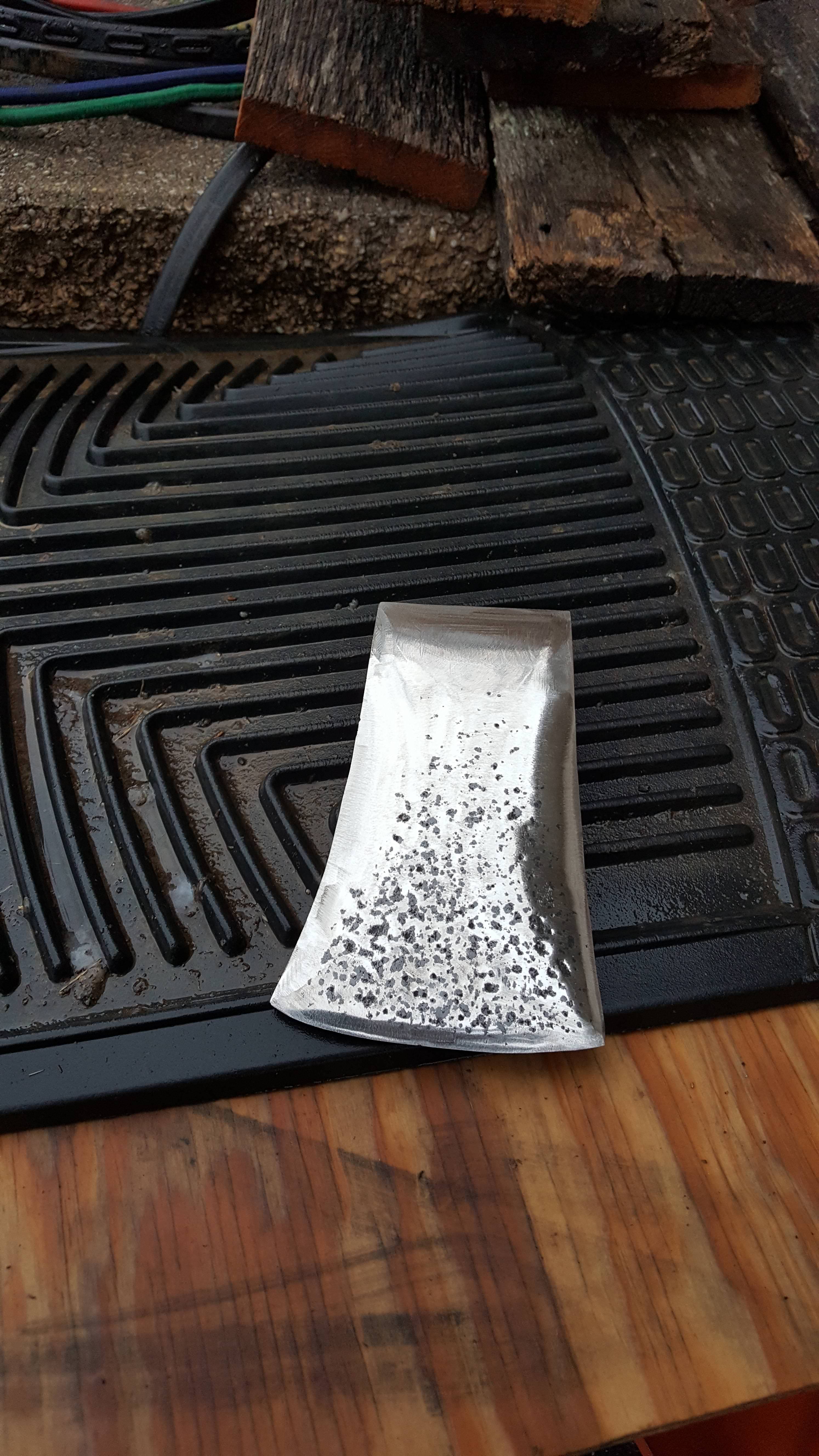



















































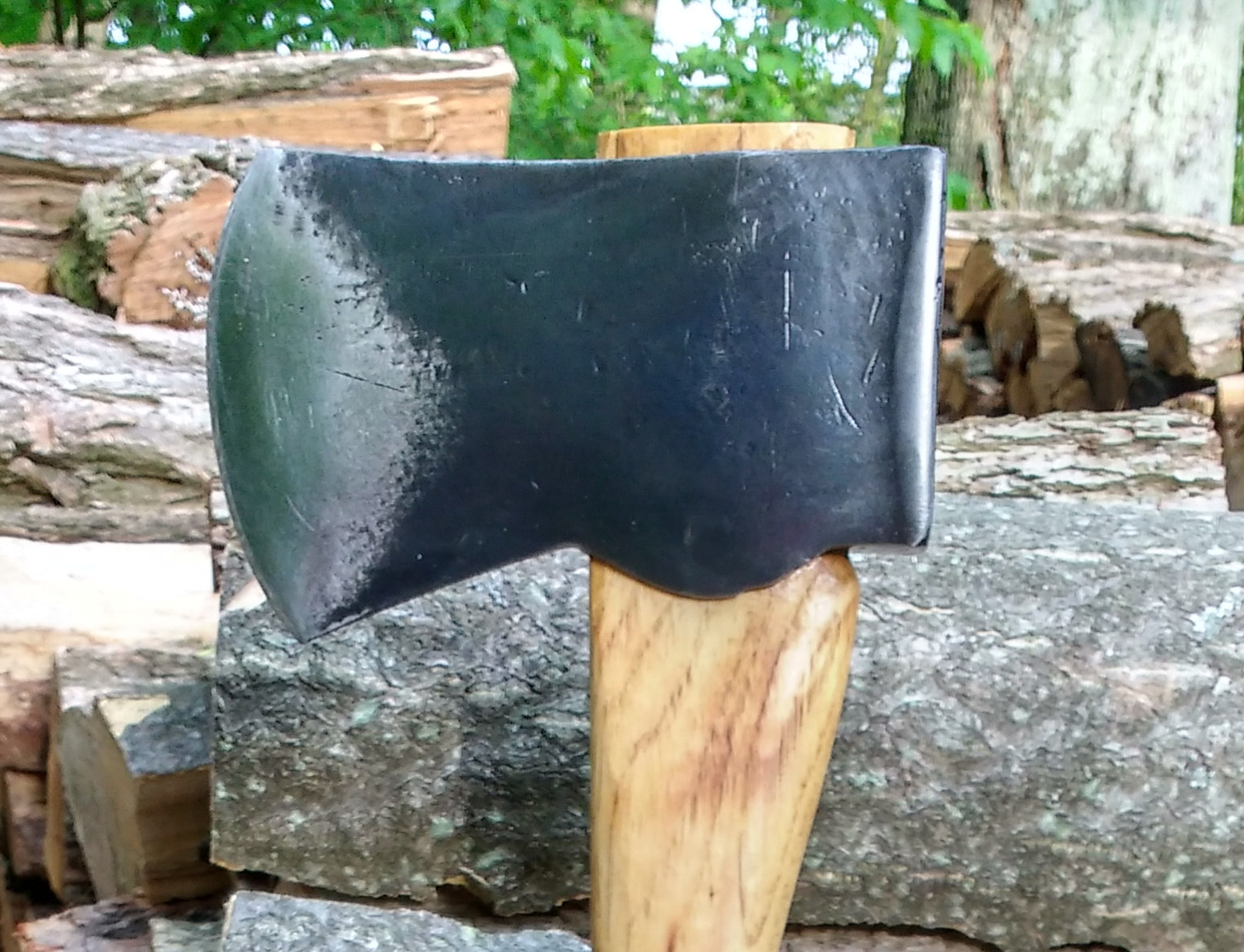
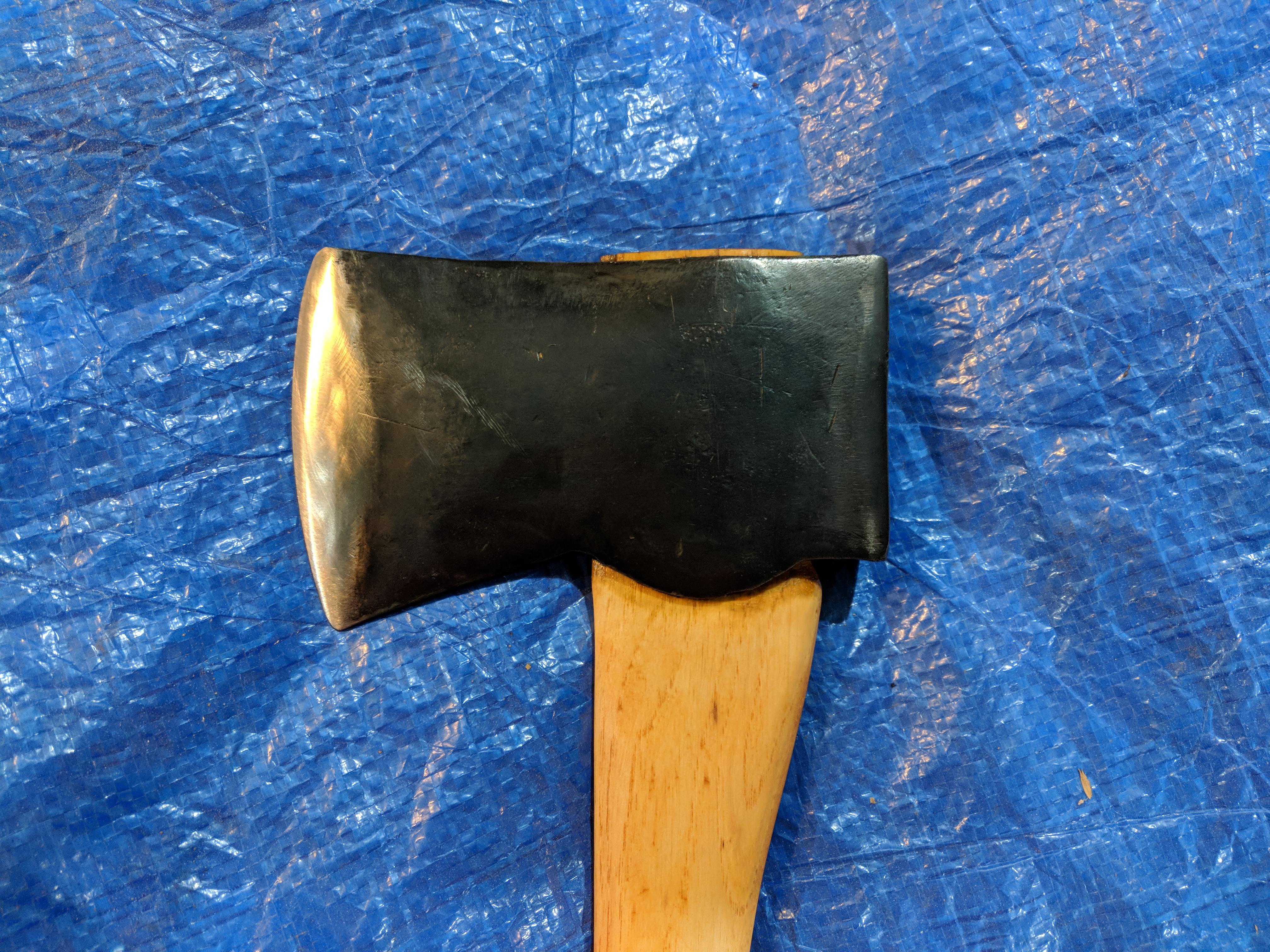
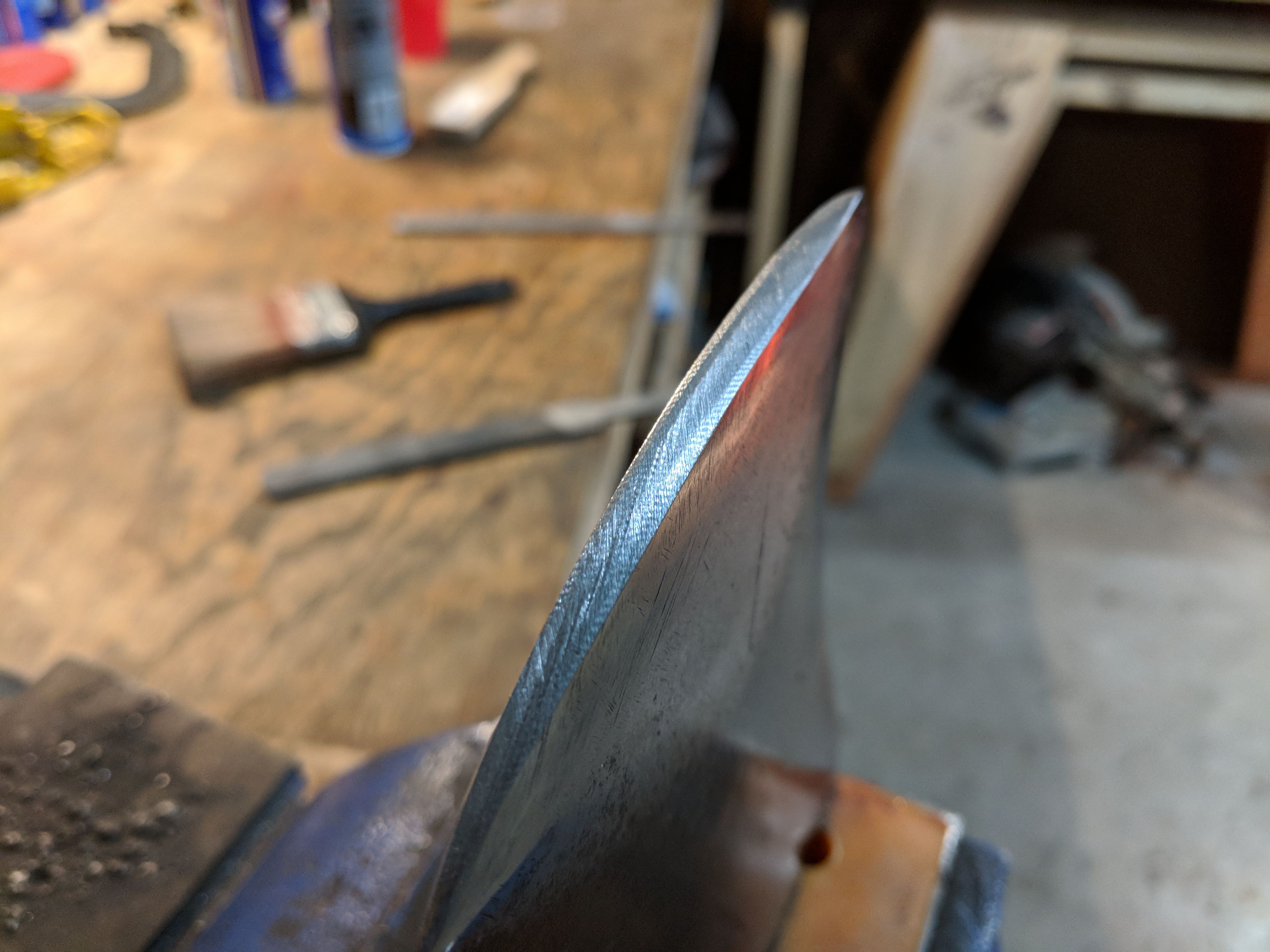
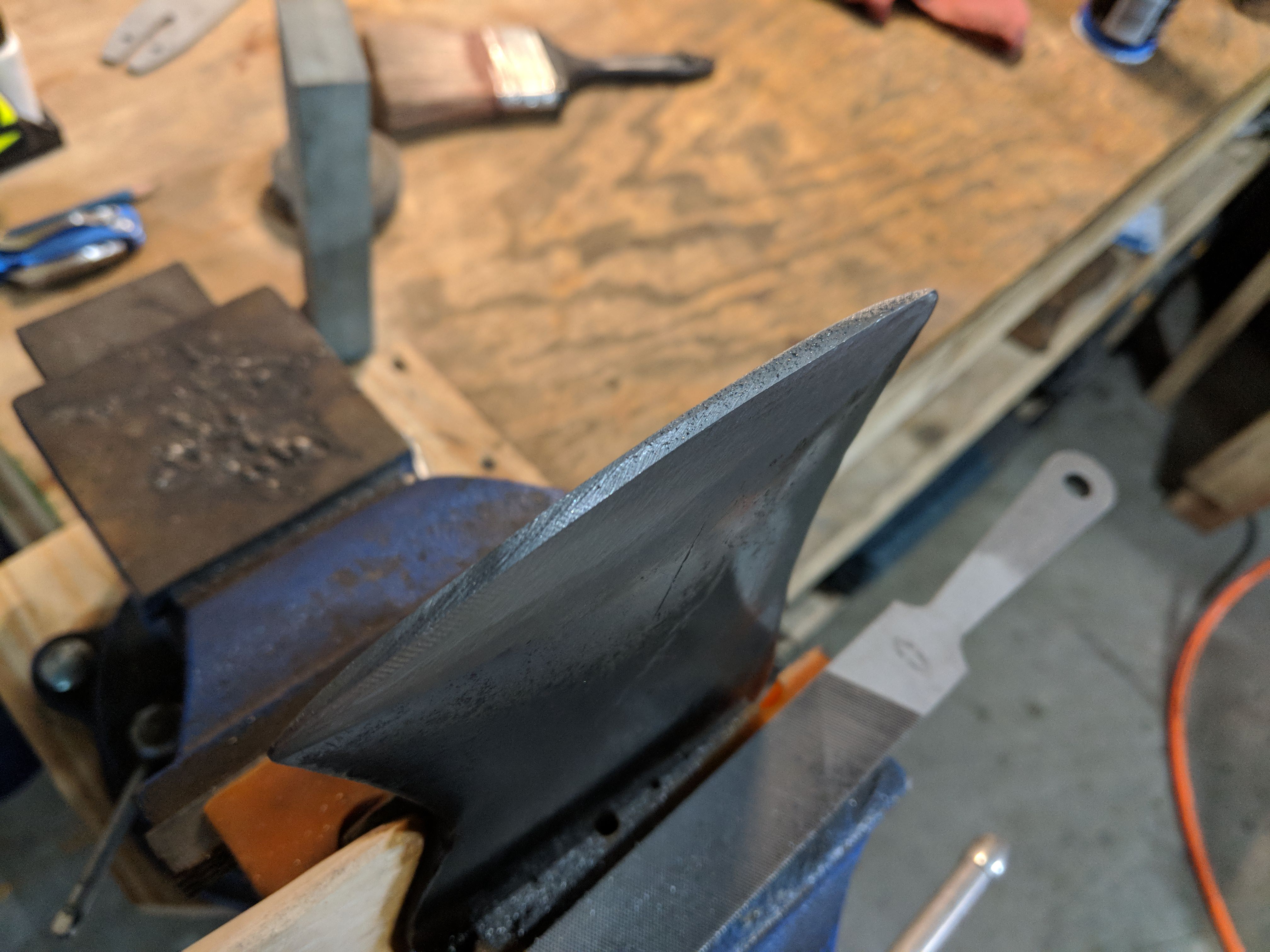
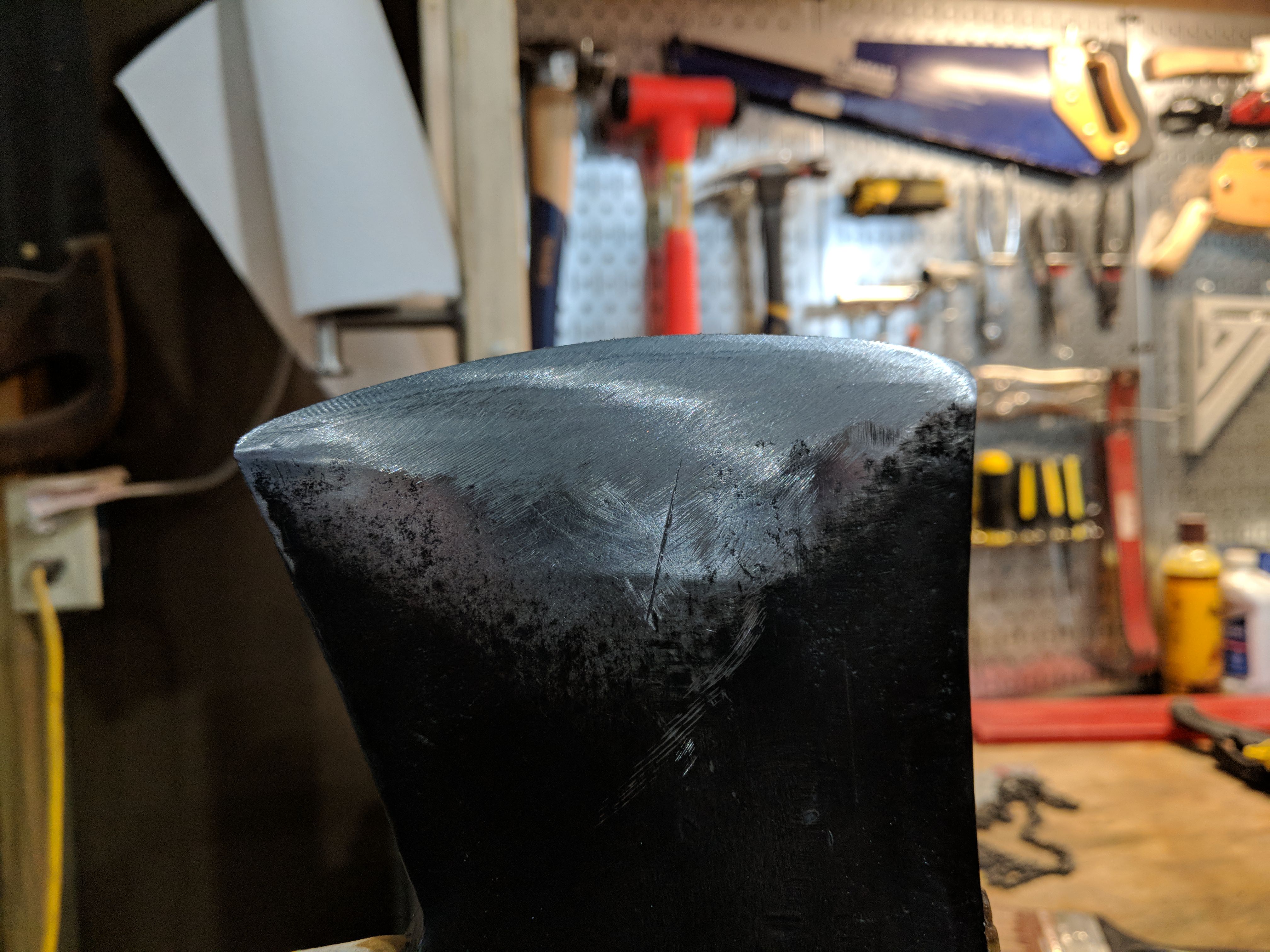
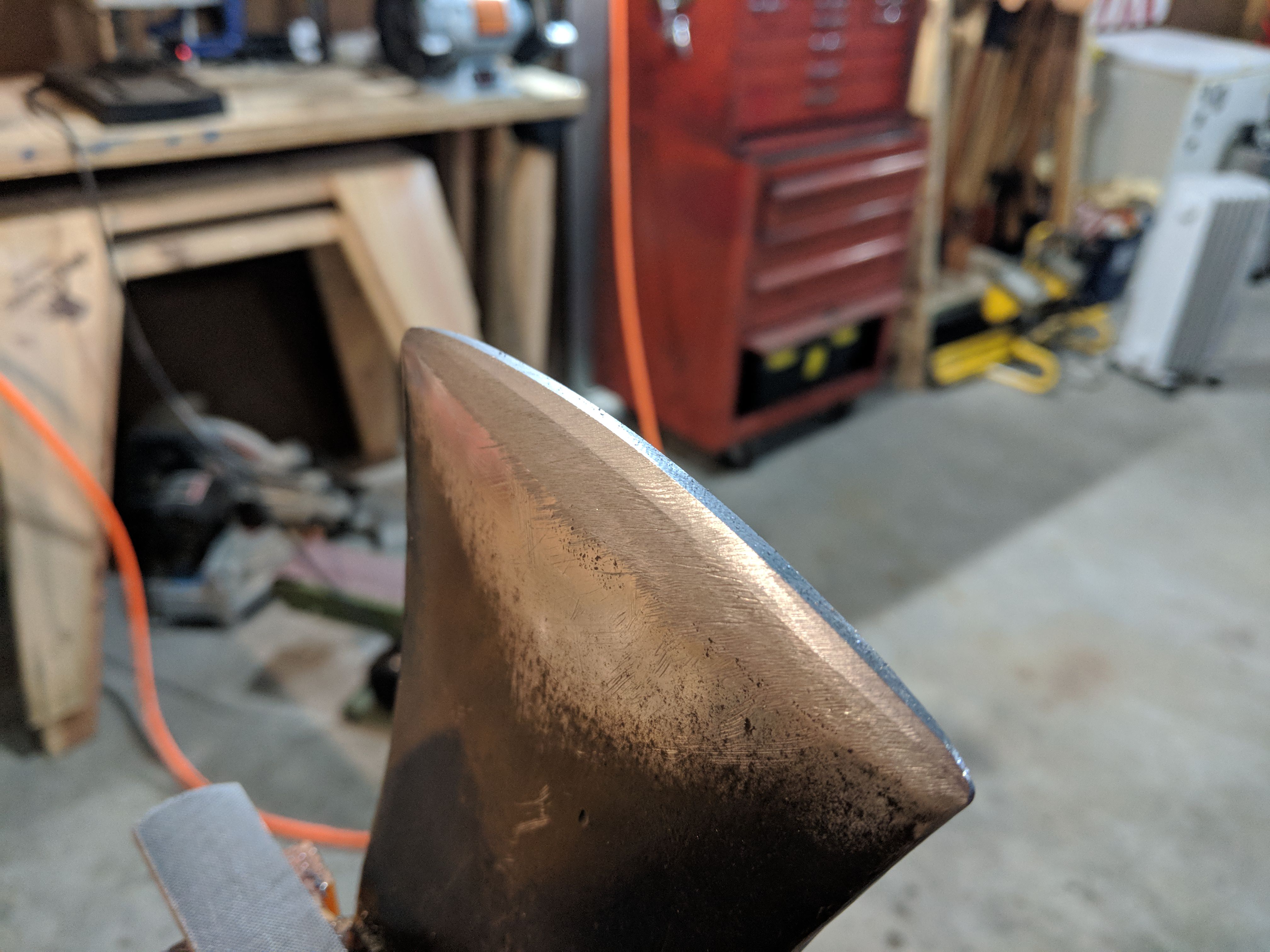
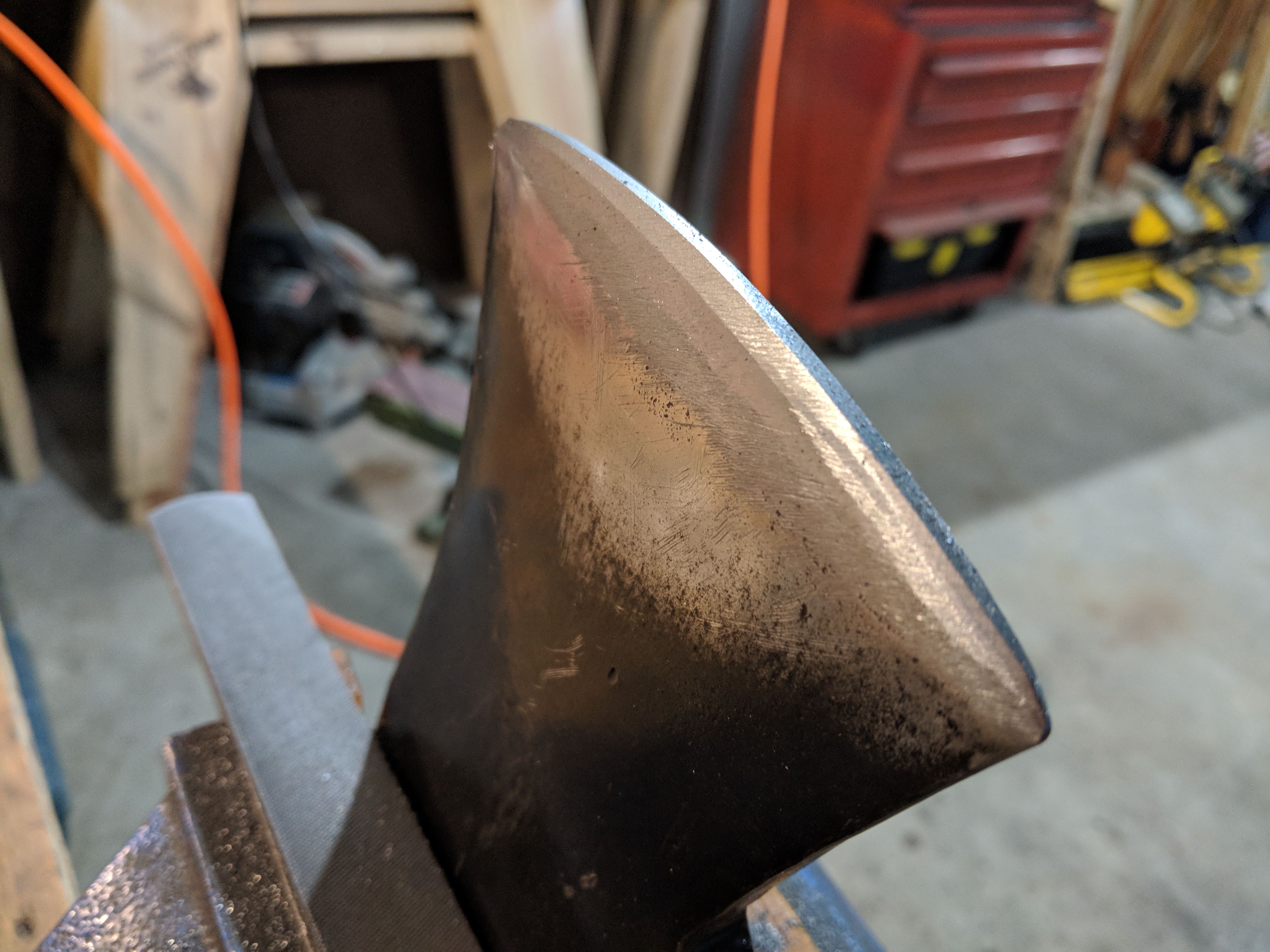
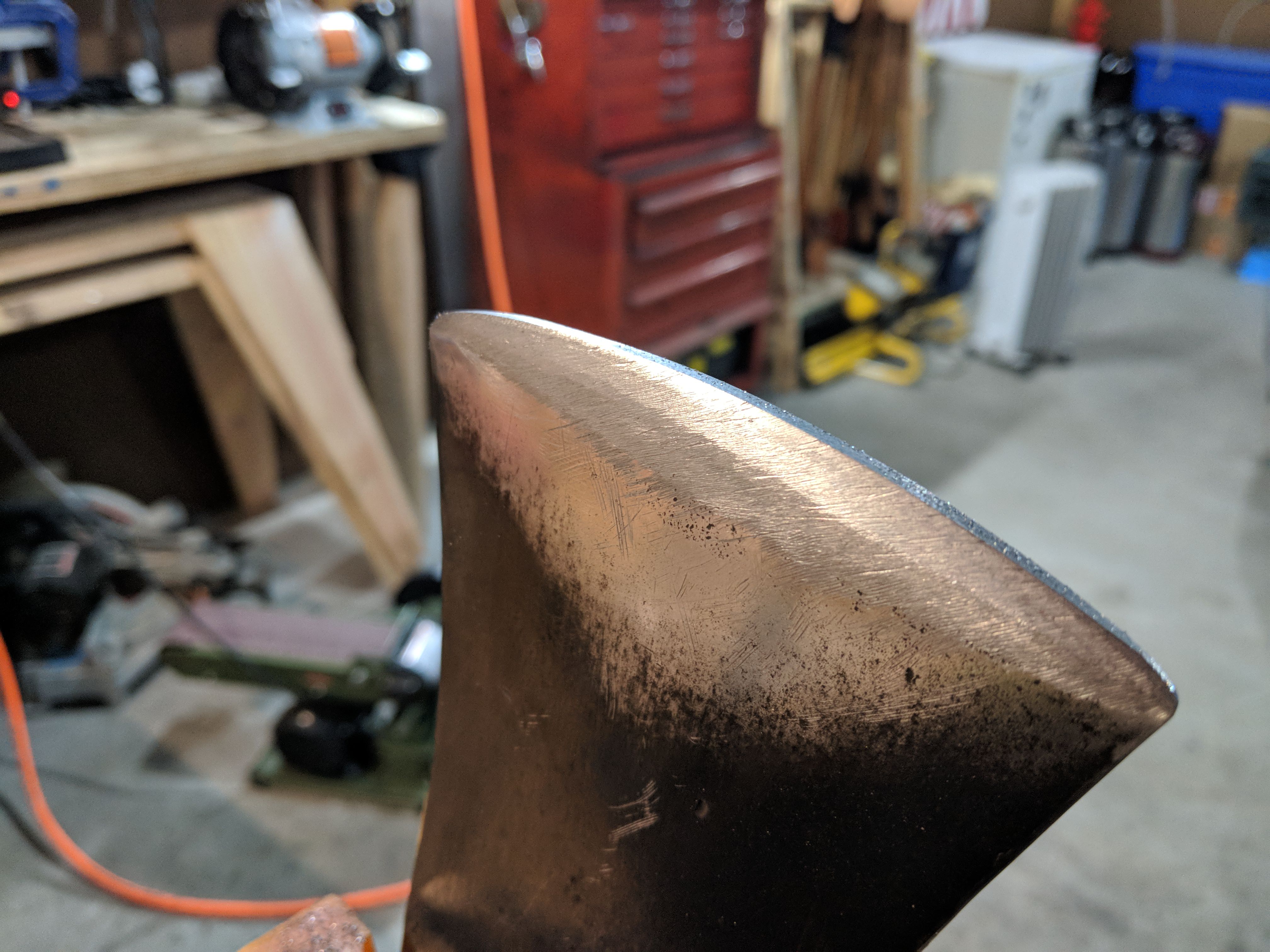
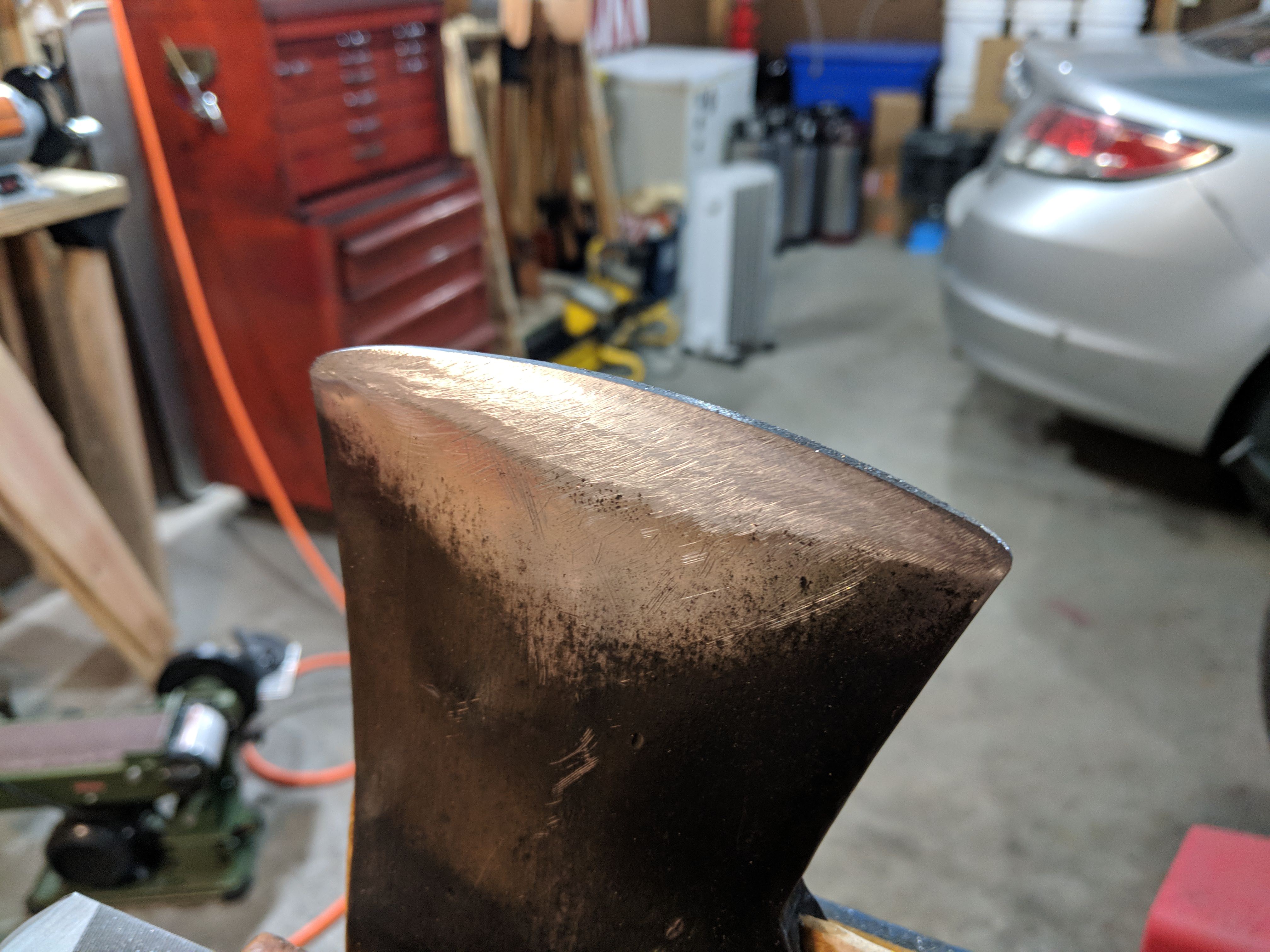
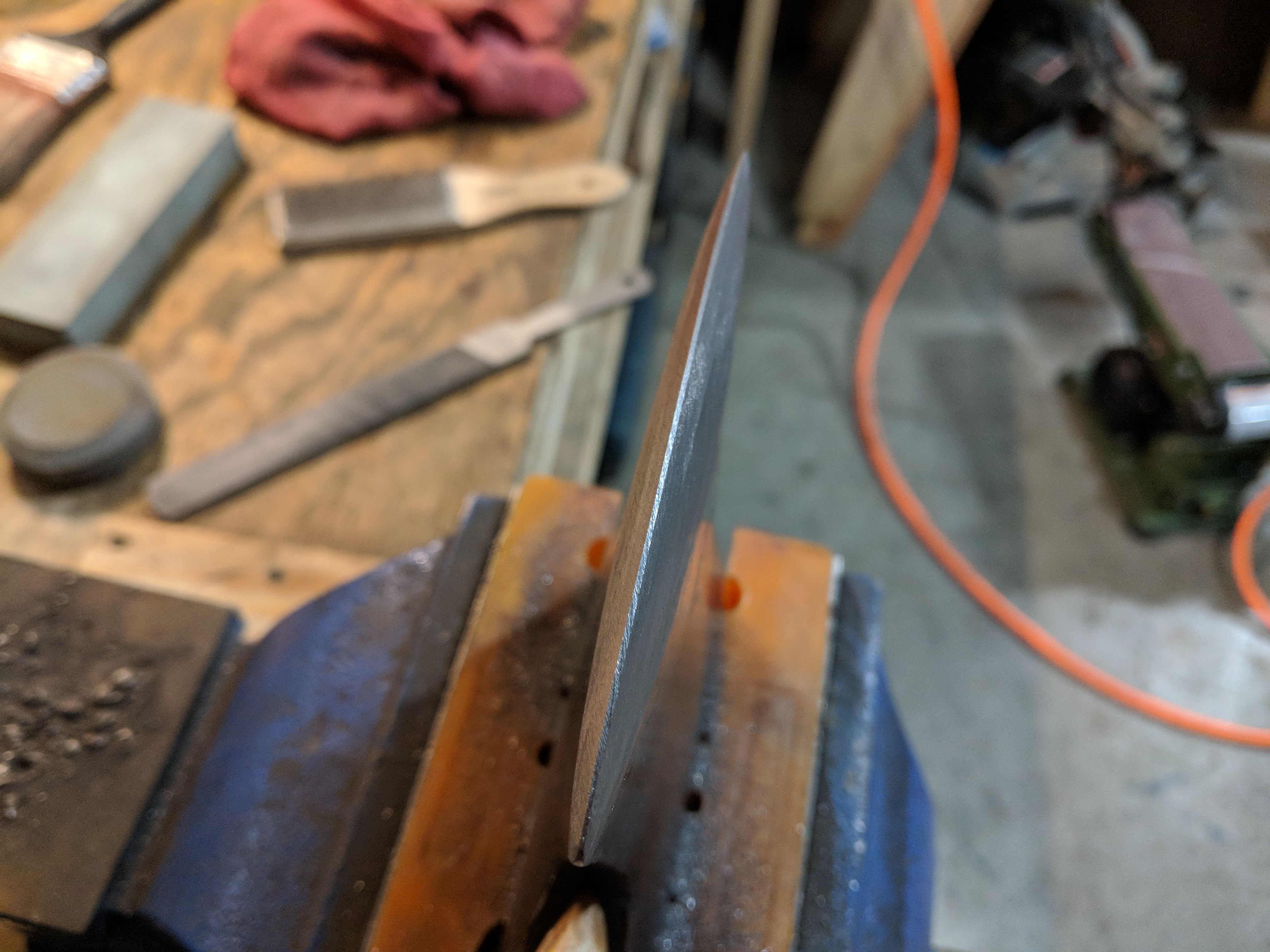
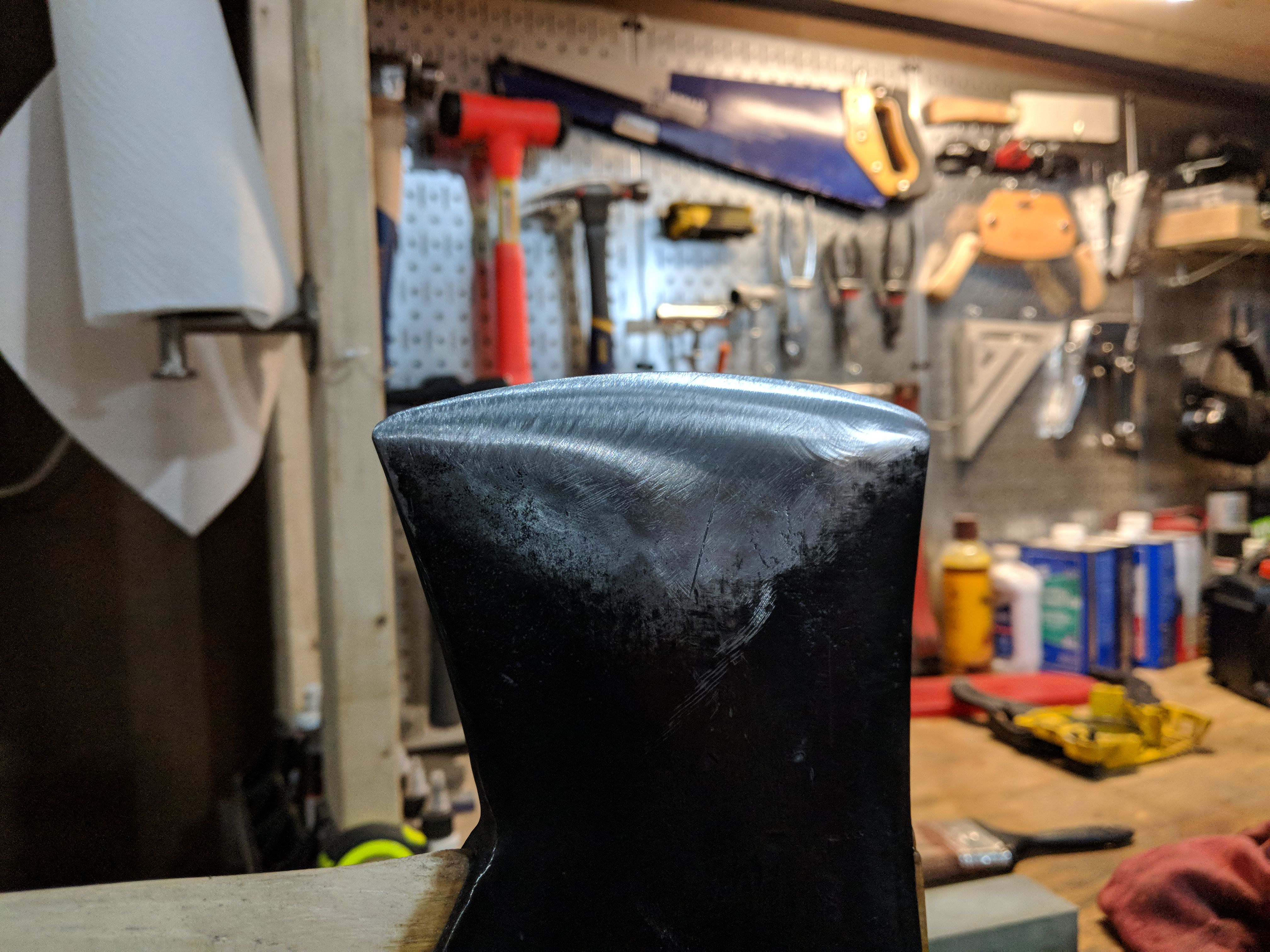
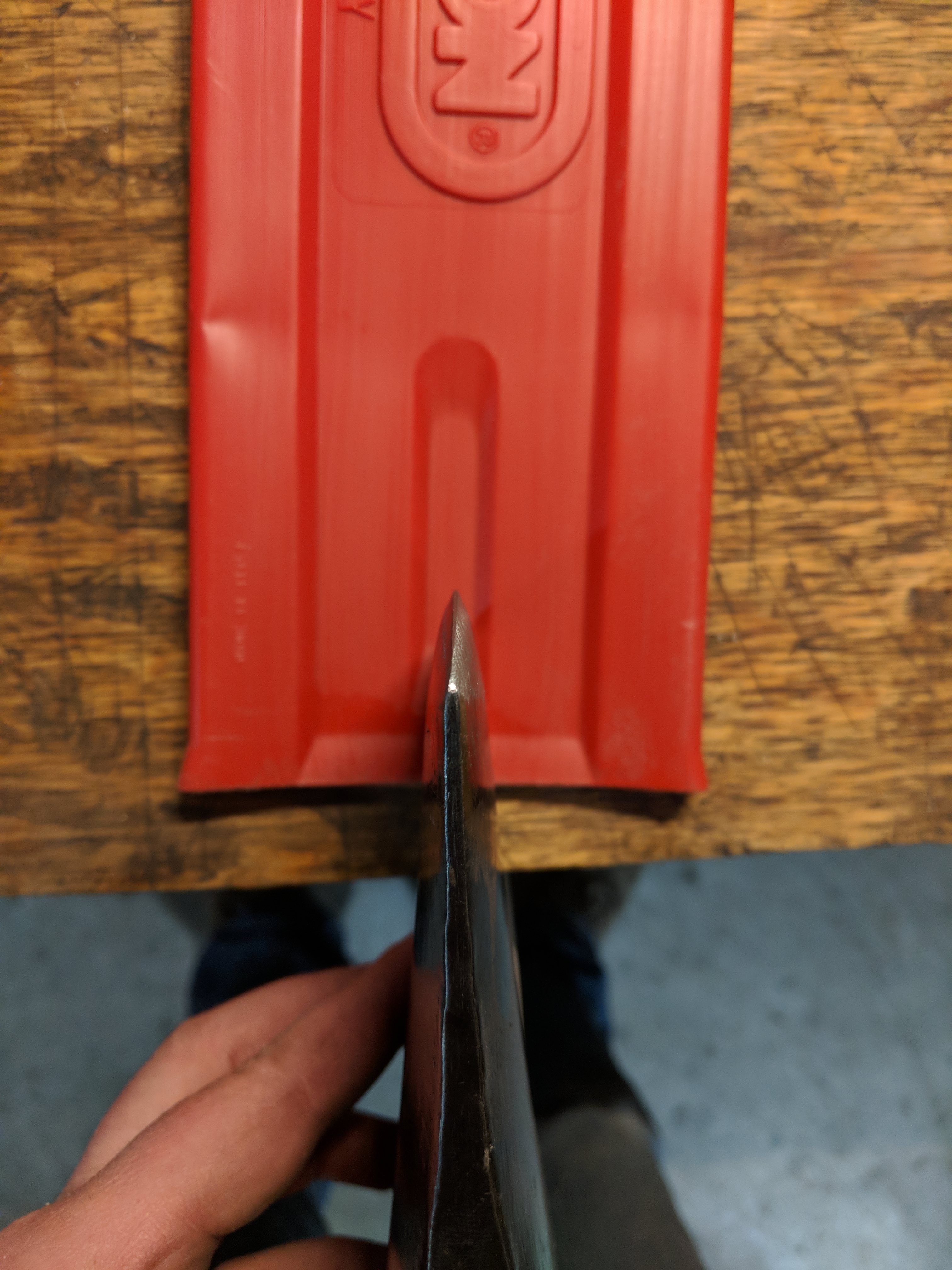
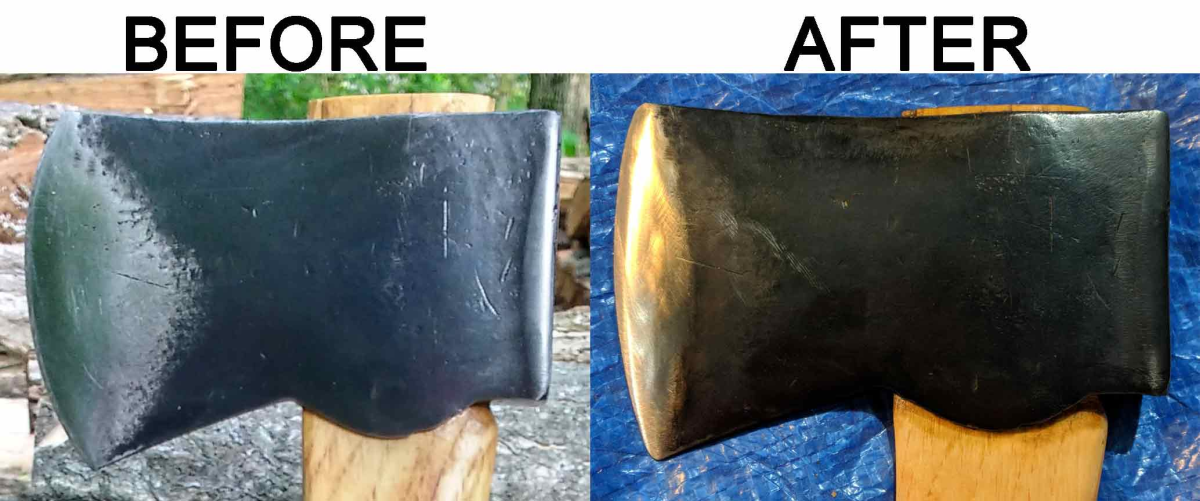
 .
. 